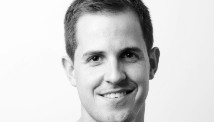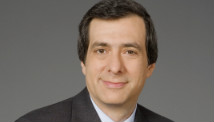NEW ORLEANS (AP) — For a Super Bowl with so many story lines, this game came up with quite a twist.
Try a blackout that turned a blowout into a shootout — capped by a brilliant defensive stand.
The Baltimore Ravens survived a frenzied comeback by the San Francisco 49ers following a 34-minute delay in the third quarter for a power outage Sunday night, winning their second championship 34-31. Super Bowl MVP Joe Flacco threw three first-half touchdown passes, Jacoby Jones ran back the second-half kickoff a record 108 yards for a score, and star linebacker Ray Lewis' last play fittingly was part of a defensive effort that saved the victory.
"To me, that was one of the most amazing goal-line stands I've ever been a part of in my career," said Lewis, who announced a month ago he would retire when the Ravens were done playing.
They are done now, with another Vince Lombardi Trophy headed for the display case.
"What better way to do it," Lewis said, "than on the Super Bowl stage?"
That stage already was loaded with plots:
—The coaching Harbaughs sibling rivalry, won by older brother John, who said the postgame greeting with Jim was "painful."
—Flacco's emergence as a top-level quarterback, and his impending free agency.
—Colin Kaepernick's rapid rise in the last two months as 49ers QB.
—The big game's return to the Big Easy for the first time in 11 years, and the first time since Hurricane Katrina ravaged the city in 2005.
—Lewis' self-proclaimed "last ride."
But when the Superdome lost power, well, that wasn't in anyone's scenario.
Flacco and the Ravens (14-6) were turning the game into a rout, leading 28-6 when, without even a flicker of warning, several banks of lights and the scoreboards went dark. Players from both sides stretched and chatted with each other in as bizarre a scene as any Super Bowl has witnessed.
"The bad part was we started talking about it," said safety Ed Reed, who had the game's only interception. "That was mentioned. It was like they were trying to kill our momentum."
After power was restored, the 49ers began playing lights out.
San Francisco (13-5-1), in search of its sixth Lombardi Trophy in as many tries, got back in the game almost immediately.
Michael Crabtree's 31-yard touchdown reception, on which he broke two tackles, made it 28-13. A few minutes later, Frank Gore's 6-yard run followed a 32-yard punt return by Ted Ginn Jr., and the 49ers were within eight.
Ray Rice's fumble at his 24 led to David Akers' 34-yard field goal, but Baltimore woke up for a long drive leading to rookie Justin Tucker's 19-yard field goal.
San Francisco wasn't done challenging, though, and Kaepernick's 15-yard TD run, the longest for a quarterback in a Super Bowl, made it 31-29. A 2-point conversion pass failed when the Ravens blitzed.
Tucker added a 38-yarder with 4:19 remaining, setting up the frantic finish.
Kaepernick couldn't get the 49ers into the end zone on the final three plays. The last was a pass into the right corner of the end zone to Crabtree that involved some incidental bumping. Jim Harbaugh insisted a flag should have been thrown.
"There's no question in my mind that there was a pass interference and then a hold," Jim Harbaugh said.
Ravens punter Sam Koch took a safety for the final score with 4 seconds left. Koch's free kick was returned by Ginn to midfield as time ran out.
"How could it be any other way? It's never pretty. It's never perfect. But it's us," John Harbaugh said of his Ravens. "It was us today."
Barely.
"Yeah, I think that last drive when we got the ball and had time to go down and score a touchdown," Kaepernick said, "we thought it was our game."
But the championship is Baltimore's.
As for the foul-up at America's biggest sporting event, officials revealed that an "abnormality" in the power system triggered an automatic shutdown, forcing backup systems to kick in. But no one was sure what caused the initial problem.
Everything changed after that until Lewis and Co. shut it down. But there were plenty of white-knuckle moments and the Ravens had to make four stops inside their 7 at the end.
"I think it speaks to our resolve, speaks to our determination, speaks to our mental toughness," John Harbaugh said. "That is what wins and loses games."
At 4 hours, 14 minutes, it was the longest Super Bowl ever.
Flacco's arrival as a championship quarterback — he had 11 postseason TD passes, tying a league mark, and no interceptions — coincides with Lewis' retirement. The win capped a sensational four games since Lewis announced he was leaving the game after 17 Hall of Fame-caliber years.
The Ravens will become Flacco's team now, provided he reaches agreement on a new contract.
Flacco's three TD passes in the opening half tied a Super Bowl record. They covered 13 yards to Anquan Boldin, 1 to Dennis Pitta and 56 to Jones.
That start boosted him to the MVP award.
"They have to give it to one guy and I'm not going to complain that I got it," Flacco said.
John Harbaugh had no complaints about getting that other trophy named after that Green Bay coach. But he struggled to balance it with the disappointment his brother was feeling.
"The meeting with Jim in the middle (of the field for the postgame handshake) was probably the most difficult thing I have ever been associated with in my life," the Ravens coach said.
The wild scoring made this the second championship in the NFL's 80-year title game history in which both teams scored at least 30 points. Pittsburgh's 35-31 win over Dallas in 1979 was the other.
The Ravens stumbled into the playoffs with four defeats in its last five regular-season games as Lewis recovered from a torn right triceps and Flacco struggled. Harbaugh even fired his offensive coordinator in December, a stunning move with the postseason so close.
But that — and every other move Harbaugh, Flacco and the Ravens made since — were right on target.
New Orleans native Jones, one of the stars in a double-overtime playoff win at Denver, seemed to put the game away with his record 108-yard sprint with the second-half kickoff.
Soon after, the lights went out — and when they came back on, the Ravens were almost powerless to slow the 49ers.
Until the final moments.
"The final series of Ray Lewis' career was a goal-line stand," Harbaugh said.
Lewis was sprawled on all fours, face-down on the turf, after the end zone incompletion.
"It's no greater way, as a champ, to go out on your last ride with the men that I went out with, with my teammates," Lewis said. "And you looked around this stadium and Baltimore! Baltimore! We coming home, baby! We did it!"
Jim Harbaugh, the coach who turned around the Niners in the last two years and brought them to their first Super Bowl in 18 years, had seen his team make a similarly stunning comeback in the NFC championship at Atlanta, but couldn't finish it off against Baltimore.
"Our guys battled back to get back in," the 49ers coach said. "I thought we battled right to the brink of winning."
The 49ers couldn't have been sloppier in the first half, damaging their chances with penalties — including one on their first play that negated a 20-yard gain — poor tackling and turnovers. Rookie LaMichael James fumbled at the Baltimore 25 to ruin an impressive drive, and the Ravens converted that with Flacco's 1-yard pass to Pitta for a 14-3 lead.
On San Francisco's next offensive play, Kaepernick threw behind Randy Moss and always dependable Reed picked it off. A huge scuffle followed that brought both Harbaughs onto the field and saw both sides penalized 15 yards for unnecessary roughness.
Reed, also a New Orleans native, tied the NFL record for postseason picks with his ninth.
Baltimore didn't pounce on that mistake for points. Instead, Tucker's fake field goal run on fourth-and-9 came up a yard short when Chris Culliver slammed him out of bounds.
The Ravens simply shrugged, forced a three-and-out, and then unleashed Jones deep. Just as he did to Denver, he flashed past the secondary and caught Flacco's fling. He had to wait for the ball, fell to the ground to grab it, but was untouched by a Niner. Up he sprang, cutting left and using his speed to outrun two defenders to the end zone.
Desperate for some points, the 49ers completed four passes and got a 15-yard roughing penalty against Haloti Ngata, who later left with a knee injury. But again they couldn't cross the goal line, Paul Kruger got his second sack of the half on third down, forcing a second field goal by Akers, from 27 yards.
When Jones began the second half by sprinting up the middle virtually untouched — he is the second player with two TDs of 50 yards or more in a Super Bowl, tying Washington's Ricky Sanders in 1988 — the rout was on.
Then it wasn't.
"Everybody had their hand on this game," 49ers All-Pro linebacker Patrick Willis said. "We point the fingers at nobody. We win together and we lose together, and today we lost it."


